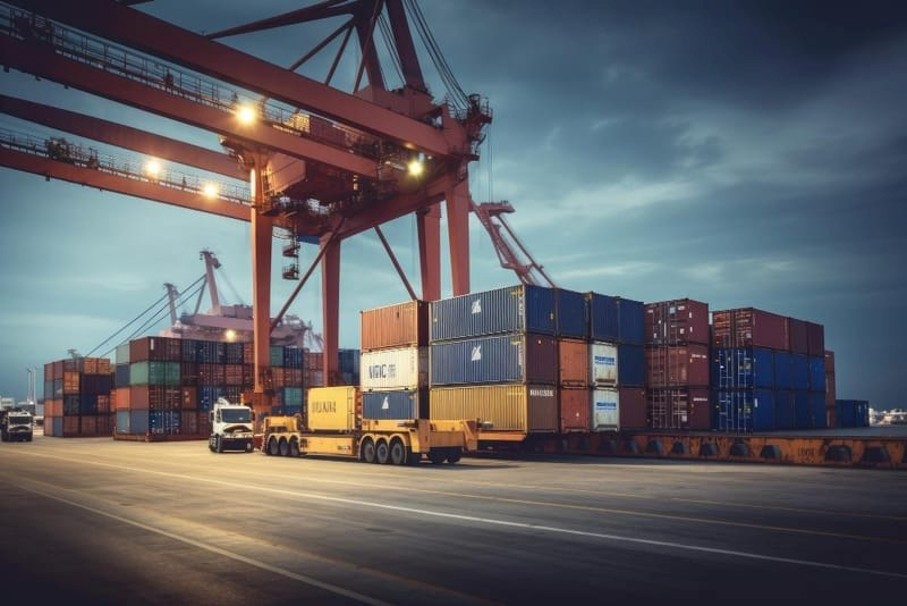Government/Policy

November 2, 2025
Leibowitz: Is the China truce real or a Band-Aid?
Written by Michael Cowden
US President Donald Trump and Chinese President Xi Jinping on Thursday had a much-anticipated meeting. Is it only a hiatus in the trade war, or did it really change the situation? I suspect the former, I but hope for the latter.
China and the US have been at loggerheads for years, as everyone knows. Perhaps the key event occurred back in 2001, when, shortly after 9/11, China was admitted to the World Trade Organization. China expressed sympathy for the US after the attacks. And it supported the Doha Development Agenda, the ministerial conference that convened in the Qatari capital in November 2001. These events played on a sense of global solidarity in the face of terrorism. The hope? That more open trade would lead to a more peaceful world.
How did that work out? Not well.
By 2008, the Doha Development Agenda had breathed its last. The “era of good feelings” after 9/11 was spoiled by differences between the developed and developing worlds on appropriate concessions that the former should bestow upon the latter. China, which claimed to be a developing country itself, took actions that stretched to the breaking point the rules created by the WTO in the Uruguay Round agreements.
The United States was disillusioned by losses in trade remedy cases in the WTO Dispute Settlement body, especially in the area of trade remedies (antidumping, countervailing duties and Safeguards). The Safeguards statute had been used to justify steel tariffs that were in effect from 2002-2003. They were terminated in part due to a WTO decision against them. I was involved in some of them.
The public’s tolerance for China’s edgy actions reached its limit during President Barack Obama’s second term. In the 2010s, for example, the steel industry filed numerous antidumping and countervailing duty actions against China. (Note, too, that anti-subsidy actions against “nonmarket economies” like China had been instituted by Commerce in 2006 and upheld by the Court of Appeals for the Federal Circuit in 2008.) I participated in some of those too.
Congress passed laws that turned trade-remedy cases against China from a very good bet to an absolute lock. Trump was elected president in 2016. During his first term, the US imposed tariffs of up to 50% against Chinese imports under Section 301. His first administration also instituted Section 201 remedies on solar panels and washing machines. It in addition rendered the WTO Appellate Body incapable of deciding cases. Neither China nor the US government regretted the demise of the dispute-settlement system.
President Joe Biden, elected in 2020, did not change course against China. Indeed, his administration imposed new tariffs (on electric vehicles, for example) and export restrictions on technology to China. Presidents Biden and Xi met a few times. But dialogue rather than progress on economic issues was the order of the day. Nothing was settled.
When President Trump did a Grover Cleveland (the only other president elected to two non-consecutive terms), China was squarely in the crosshairs. Trump quickly imposed new tariffs on imports from China (and nearly everyone else). The president also invoked new and very controversial laws to rewrite the global economic order without congressional participation. These steps led to international retaliation and anger from China and many others.
Then, China played its ace: rare earths. President Trump threatened massive retaliatory tariffs in response. Both countries realized that, on the course they had embarked on, economic warfare and even armed conflict were not out of the question. Last week’s meeting in South Korea was the result. It seems to have turned down the heat.
The specific terms of the deal remain unclear. China will suspend its export restrictions (licensing, etc.) on rare earth metals for one year. In exchange, the US will reduce its International Emergency Economic Powers Act (IEEPA) and Section 301 tariffs to about 47% from 57%. This does not include Section 232 tariffs on various goods (steel, aluminum, automobiles and auto parts, copper, etc.) or, of course, trade remedies.
Chinese imports, including goods that are not and never will be made in the US, are still going to be very expensive. China has also agreed to resume purchases of US soybeans and other products. (It didn’t keep that commitment in 2020, so let’s see what happens this time.) China has in addition committed to step up enforcement to restrict exports of precursors to fentanyl. (See parenthetical above.)
The China rare earth card presents real problems. As I’ve noted before, these elements are vital today and tomorrow to global commerce and defense (or, if you like, war). A one-year pause in China’s steps to make it hard (or even impossible) to obtain these materials should not make anyone feel comfortable.
The IEEPA tariffs are going before the Supreme Court this week and may not survive the visit. The reduction in China’s tariffs could be larger than the president agreed to.
In short, there are many open issues, and an incident could change everything. Initiatives by the president, Congress and the states are necessary to address these and many other problems that have festered for too long. That’s due in part to the inability of members of Congress to compromise, which extends to the states. One important result: the federal government remains shut down.
Domestic consensus is the indispensable precursor to international agreement. Without strong domestic support, as Henry Kissinger wrote, diplomacy is just “a series of improvisations.” While the threat China poses to the world economy and even to world peace is recognized, we lack consensus on what to do about it. Just last week, the Senate, in the middle of the shutdown, rebuked President Trump’s tariffs under IEEPA against Brazil, Canada, and more than 180 other countries. While these Senate votes won’t become law, they indicate the absence of consensus on the president’s actions.
Congress could help build consensus if members talked with each other. But each major party is stuck with its extreme wing, and the balance of power is so close that the fanatics in both parties control the agenda. And those extremists are empowered by the triple whammy of closed primaries, gerrymandered districts, and the hanging on of people who should be out to pasture.
The main argument against term limits was the value of the experience of senior members to get things done. That argument has clearly been proven wrong. If domestic consensus is to be found, we must elect representatives who can reach it. Maximize the number of competitive districts, open primaries to all voters, and limit terms. Then we’ll have a chance to develop a Congress that can confront the executive branch more effectively. That will give us a chance to reach domestic consensus and deal effectively with both adversaries and allies abroad.
Editor’s note
This is an opinion column. The views in this article are those of an experienced trade attorney on issues of relevance to the current steel market. They do not necessarily reflect those of SMU. We welcome you to share your thoughts as well at info@steelmarketupdate.com.






